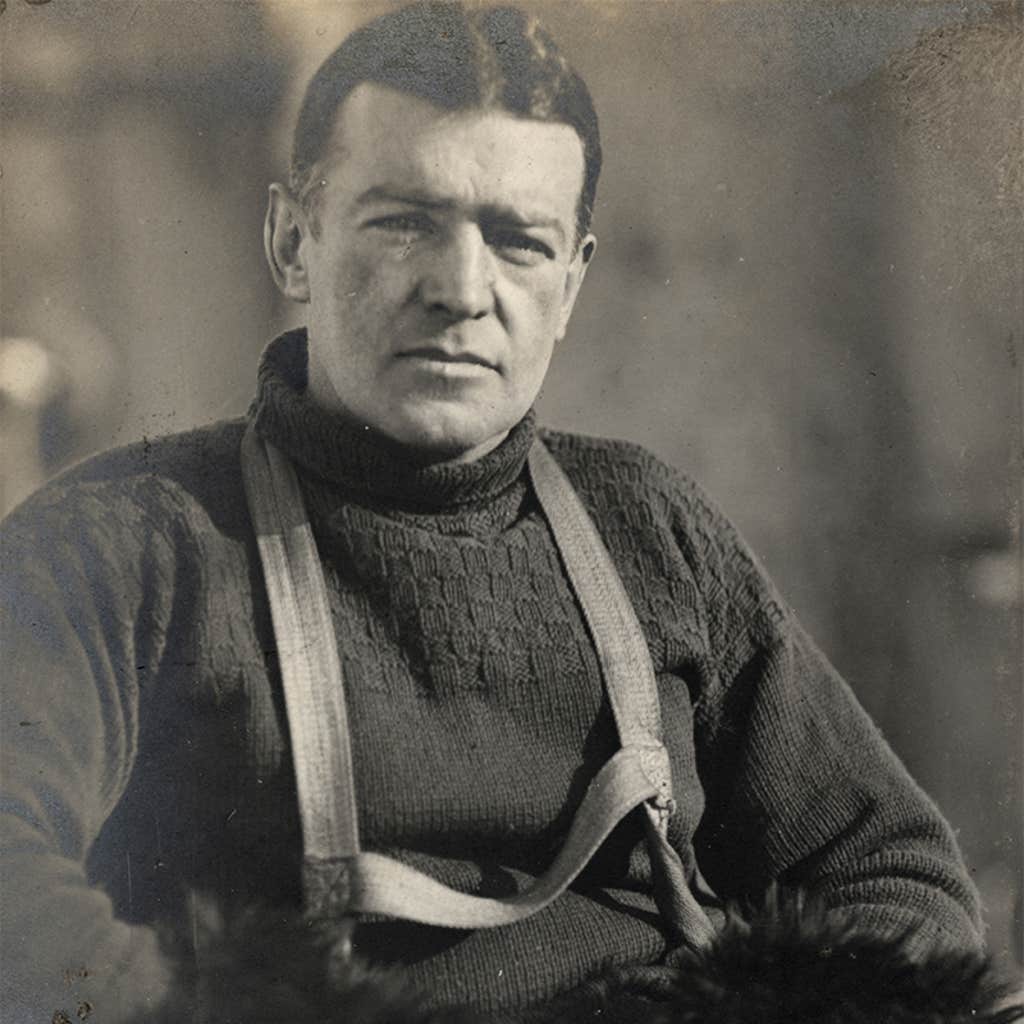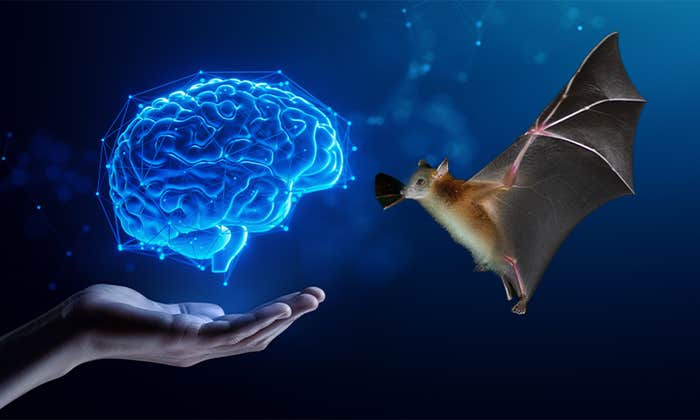For 10 months, Ernest Shackleton and his crew, bound for the South Pole, were stranded in Antarctic ice. The massive pressure of the ice was slowly crushing their ship, HMS Endurance. When the ship began to break apart, the men abandoned it and camped on the ice. A few weeks later, the Endurance sank. The freezing days dragged on, but the men saw hope when their icy campground began to splinter, revealing a watery lane for their small boats.
In May 1916, the explorers set off for land, battling violent winds, currents, and ice floes. They rowed until their bodies were ragged. Soon they began seeing things: “resemblances to human faces and living forms in the fantastic contour and massively uncouth shapes of berg and floe,” Shackleton wrote in his account of their survival, South. During a 36-hour trek over mountains and glaciers, with two crew members, Shackleton wrote, “it seemed to me often that we were four, not three.” Inspired by Shackleton’s account, T.S. Eliot wrote in “The Wasteland,” “Who is the third who walks always beside you?”
Who indeed? Now, cognitive scientists have taken up the quest to explain the mysterious third. The felt presence of an unseen person, they have found, results from breaks in the neural connections that normally link expectations and actual experiences. During extreme conditions, or when the connection is broken and actions don’t meet unconscious expectations—a sign of land, a rescue team—our brains feed our minds a phantom substitute.
She reported an invisible man clasped her in his arms.
Ben Alderson-Day, an associate professor of psychology at Durham University, in the United Kingdom, and author of Presence, winner of a British Psychological Society’s Book Award for 2023, says it doesn’t always take Shackleton-like extremes to generate a felt presence. “People often describe a very distinct feeling that someone is there with them when they’re drawn into some sort of social situation where they need to act or change their position to make themselves safe,” Alderson-Day says.
Psychologists and neuroscientists have long believed this felt presence may link the sense of ghosts, spirits, phantoms, wraiths, specters, and apparitions, across all cultures. An early theory pioneered in the 1980s by psychologist Justin Barrett, attributed supernatural agency to a “hyperactive agency detection device,” a neural mechanism that biases us to presume the presence of purposeful agents. Its existence stems from our evolutionary success of erring on the side of caution when it comes to detecting predators. Around the same time, the late psychologist Michael Persinger began his notorious “God Helmet” experiments. He created weak electromagnetic fields in a motorcycle helmet, which participants wore while undergoing sensory deprivation. Persinger claimed he could induce a presence, often in the form of God, in 80 percent of participants. (Nearly all replication attempts failed to confirm the effect.)
Most recently, neuroscientist Olaf Blanke, a Swiss-German neurologist working in Lausanne, is using more rigorous methods than Persinger. While evaluating a 22-year-old woman for epileptic surgery, his team serendipitously discovered that it’s possible to induce neural activity that consistently elicits a felt presence. The procedure involved stimulating specific parts of her brain with electrodes, a fairly common technique that can produce a variety of hallucinatory sensations and perceptions. But this time, after a small electrical zap, she reported the clear yet unseen presence of someone behind her. During subsequent stimulations, she reported a man clasped her in his arms.

The stimulated region, called the temporoparietal junction, is where the temporal and parietal lobes of the brain meet. It is heavily involved in processing corporeal information relative to oneself and to other bodies. Damage or malfunctioning here can induce strange, out-of-body experiences where one views a remote, disembodied perspective of their own self. Aberrant functioning can also distort what are normally clear distinctions between oneself and others, where you end and something, or someone, begins.
To explore bodily illusions, Blanke and his team created an experimental device that seemed inspired by a Philip K. Dick novel. Participants wear a haptic sensing device that tracks their finger motion while they make poking movements into empty space in front of them. These movements are then replicated by a robot behind them, which they can’t see, that pokes them in the back. When a delay between the participants’ movements and the felt pokes is introduced—disrupting the causal relation between action and sensation—the participants attribute the pokes to an unseen but felt agent. Fosco Bernasconi, a senior scientist working with Blanke, explains that an impairment to self-body signals “causes the brain to misinterpret its own body signals and attribute them to somebody else.”
A neurological model of motor control, formally known as the forward model, says that whenever we execute movements to carry out an action, we create predictions in the form of neural body signals—called “efferent copies”—that allow us to anticipate the sensory consequences of our actions. When this causal relation gets disrupted by say, a delay, and the sensations deviate from our expectation, our brain can resolve the mismatch by attributing them to the actions of someone else. It makes sense, Alderson-Day says, “that if you disrupt sensorimotor signaling, you have an illusory body turn up.”
Blanke’s model provides a plausible mechanistic account to explain the feeling of a presence, but one explicitly tied to the activation of the motor system. In contrast to the experience of meeting God while seated and motionless, as Persinger claimed his experiments showed, Alderson-Day explains that Blanke’s work “is more focused on the clinical and neurological correlates of very distinct presence experiences—separate from the spiritual and ecstatic.”
Under stress, our brains feed our minds a phantom substitute.
What originally inspired Alderson-Day to investigate felt presence was a patient who constantly heard a voice. The patient didn’t have to perform any action to hear the voice, he just expected to hear it at any given moment, as if it was always “there.” Such motionless presence experiences fit well with another theoretical candidate for explaining their neural basis, called predictive processing, which holds that when one has high unconscious predictions or expectations of events, they can generate a bias that overrides perception.
Predictive processing is a revolutionary theory because it overturns the notion of perceptual experience as constructed primarily from incoming sensory signals. It implies, rather, that experience arises from a continually updated mental model of the world. Our brain is constantly generating predictions of sensory inputs around us. If we encounter something new, our brain may initially provide a faulty prediction, but in time, with more information, it tweaks the model to fit the reality.
The theory goes a long way to explain the massive amount of brain connections involved in making sense of the world. (Incoming sensory signals alone only comprise 1 to 2 percent of the brain’s energy consumption.) And how easily our perceptual experiences can go astray. Alderson-Day says that even mild disruptions between expectation and experience can result in the perception of a presence. “Predictive processing basically says that we all have the propensity to experience presences and other hallucinations, because we all rely on expectation to some degree in our perception of the world.”
In freezing Antarctica, it wasn’t only the extreme circumstances that gave rise to the “third who always walks beside you,” it was a precise set of unconscious processes born out of the misery that Shackleton and his men found themselves in, and the dire need to find their rescuers. These processes are universal in all of us, and so the next time you sense somebody who isn’t there, you might reflect on why that should be. ![]()
Lead image by Tasnuva Elahi; with images by alla_line and Illustration Forest / Shutterstock
Prefer to listen?




























